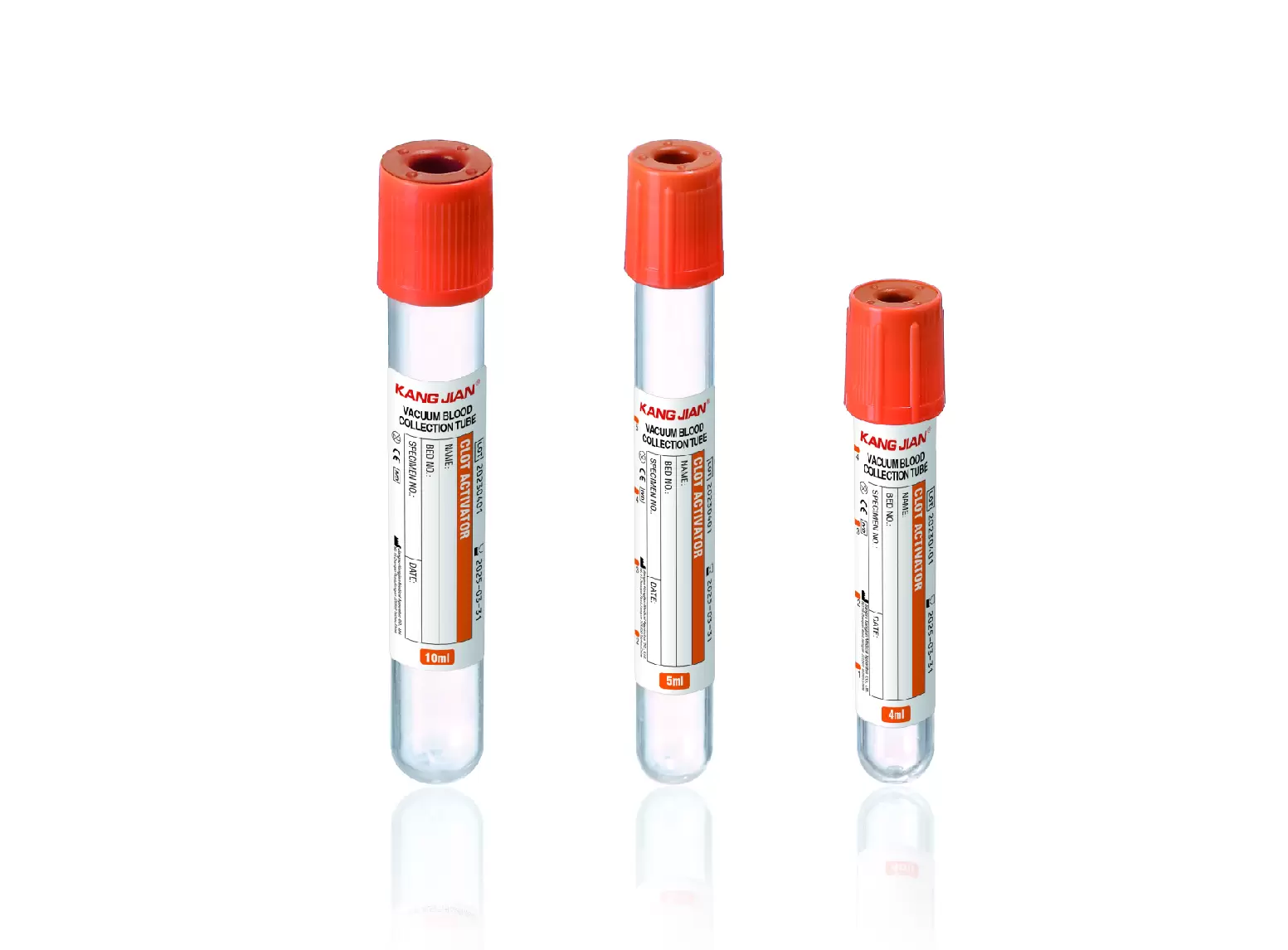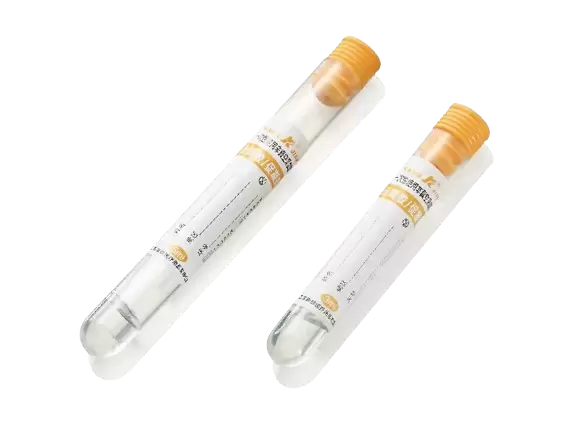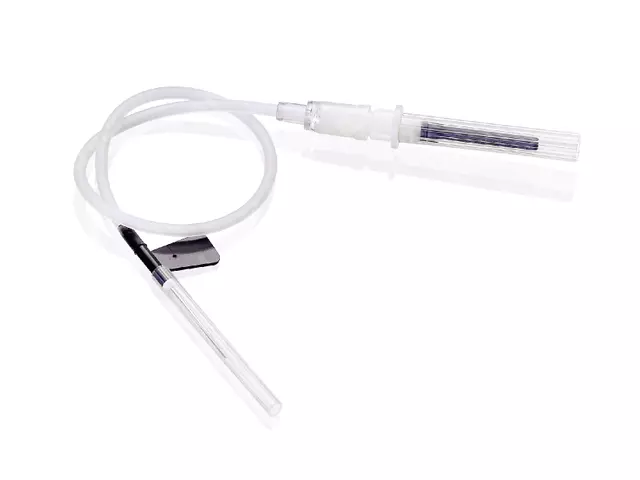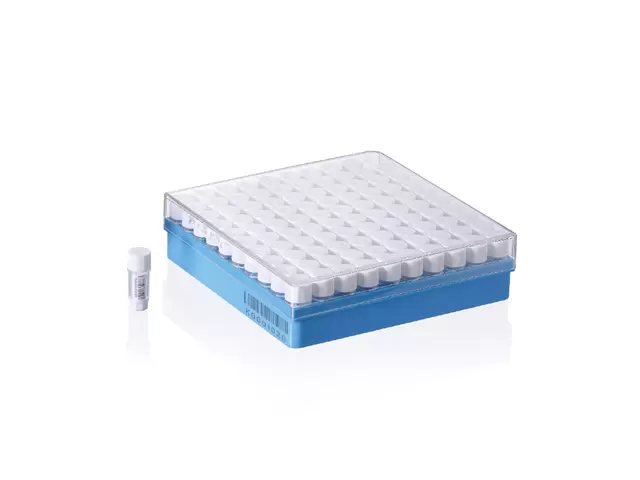Clot Activator Blood Collection Tubes: Essential Tools for Efficient and Reliable Diagnostic Testing
In the fast-paced world of medical diagnostics, accurate and timely test results are essential for proper patient care. Blood samples, which provide critical data for diagnosing various conditions, must be handled with precision and care. Among the many tools used in blood collection, clot activator blood collection tubes are among the most important. These tubes are designed to promote the rapid clotting of blood, facilitating the extraction of serum for further testing. This article Kangjian delves into the applications of clot activator blood collection tubes in clinical diagnostics.
What Are Clot Activator Blood Collection Tubes?

Clot activator blood collection tubes are specialized containers used to collect blood samples that require serum for diagnostic testing. These tubes are typically made of either plastic or glass, with a special coating on the interior surface that acts as a clotting activator. The primary function of this coating is to stimulate the clotting process in the blood, ensuring that the blood forms a clot quickly, and the serum can be separated from the other blood components.
The clotting process involves the transformation of fibrinogen into fibrin, which is responsible for forming the blood clot. When blood is drawn into the tube, the clot activator on the inner surface of the tube accelerates this process. Once the blood has clotted, the serum separates from the blood cells, allowing it to be tested for various biomarkers. The tube typically contains a vacuum, which ensures that the correct amount of blood is drawn, reducing the risk of errors during the collection process.
Once the blood has been collected and the clotting process is complete, the serum can be extracted and subjected to a variety of tests, including biochemical analyses, enzyme assays, and hormone measurements. These tubes are essential for ensuring the efficiency and quality of serum collection, which is crucial for accurate test results
Common Applications of Clot Activator Blood Collection Tubes in Medical Diagnostics
Clot activator blood collection tubes are used in a wide variety of diagnostic tests, as they provide a reliable way to obtain serum, which is required for many types of laboratory analysis. Some of the most common applications of clot activator blood collection tubes include:
1. Serum Testing
Serum is the liquid portion of blood that remains after clotting, and it is one of the most commonly analyzed components in clinical diagnostics. Many tests, such as liver and kidney function tests, cholesterol and lipid profiling, and electrolyte testing, rely on serum samples. The clot activator blood collection tube ensures that serum can be quickly and efficiently separated from the cellular components of the blood, enabling timely analysis. These tubes are essential for tests that measure substances like enzymes, proteins, and hormones, as the serum is often required to perform these analyses. Without an efficient clotting process, it would be difficult to isolate the serum, potentially delaying results or leading to inaccurate findings. By promoting clotting, clot activator blood collection tubes enable faster and more efficient processing of blood samples, which is particularly important in critical care settings where timely results can directly impact patient outcomes.
2. Endocrine and Hormonal Assays
Hormonal assays require blood serum to measure the concentration of various hormones in the body. For example, thyroid function tests, testosterone levels, and cortisol assays all require a serum sample. The clot activator blood collection tube ensures that serum is efficiently obtained by promoting the clotting of blood, allowing for the accurate measurement of hormone levels, which are critical for diagnosing endocrine disorders. The accurate measurement of hormones such as thyroid-stimulating hormone (TSH), insulin, and cortisol is essential for managing conditions like hypothyroidism, diabetes, and stress-related disorders. The clot activator blood collection tube helps minimize delays in obtaining high-quality serum, allowing for prompt and accurate hormonal analysis.
3. Enzyme and Protein Analysis
Enzyme assays are commonly used to monitor organ function and detect certain diseases. For example, liver enzymes like ALT (alanine aminotransferase) and AST (aspartate aminotransferase) are measured from serum samples to assess liver health. Similarly, proteins such as albumin and globulin, which are important markers for various medical conditions, are also measured using serum obtained through clot activator blood collection tubes. These tests are essential for diagnosing a range of diseases, including liver disorders, kidney disease, and certain cancers. The clot activator blood collection tube ensures that serum can be obtained without interference from red blood cells or platelets, ensuring that the enzyme and protein levels measured are accurate.
4. Drug Monitoring
Therapeutic drug monitoring (TDM) involves measuring drug levels in the serum to ensure that they are within the therapeutic range for effective treatment. Clot activator blood collection tubes are commonly used in TDM, as they enable the separation of serum from the blood efficiently. This ensures that the drug levels are measured accurately, which is crucial for adjusting dosages and avoiding potential toxicity or subtherapeutic effects. By using clot activator blood collection tubes, healthcare providers can monitor the effectiveness of medications and ensure that patients are receiving the optimal dosage for their condition, reducing the risk of adverse reactions or ineffective treatment.
5. Biochemical Profiling
Routine biochemical profiling, which includes metabolic panels and lipid panels, often relies on serum samples. These profiles provide a snapshot of a patient's metabolic health, including glucose levels, cholesterol, and kidney function markers. Clot activator blood collection tubes are essential in this process, as they ensure that the serum is efficiently separated and ready for testing. This type of profiling is often used as part of routine health check-ups or to monitor patients with chronic conditions such as diabetes or cardiovascular disease. The clot activator blood collection tube plays a critical role in ensuring that these tests are conducted accurately and efficiently.
Clot activator blood collection tubes are vital tools in modern medical diagnostics. Their ability to facilitate the rapid clotting of blood and the separation of serum makes them indispensable in a wide range of clinical applications. From enzyme and hormone assays to therapeutic drug monitoring and biochemical profiling, these tubes ensure that accurate and timely test results can be obtained. By understanding the importance and functionality of clot activator blood collection tubes, healthcare professionals can improve the efficiency and reliability of diagnostic testing, ultimately enhancing patient care.




